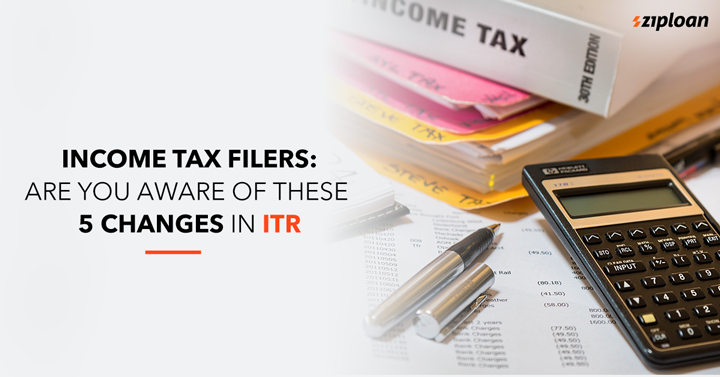The last date for income tax return filing for the assessment year 2019-20 is July 31, 2019. The Income Tax Department then processes the refund. The income tax filer can either check the income tax return status or refund on the NSDL website or income tax e-filing portal. It goes without saying that the filers must be very careful when they file an income tax return as few changes are introduced in several forms this year.
Read on to know the 5 important changes that you must be aware of while filing an offline or online income tax return.
Table of Contents
Form 16
also read: income tax e-filing: the easiest way to e-file income tax in india
The revised Form 16 requires details of income earned from house property. It also seeks details of the deductions with respect to tax-saving schemes, income from other sources, and allowances received by employees. The income tax filer also has to provide details of the deductions of the interest earned on deposits in a savings account.
And for the employer, he has to provide the details of the break up of the tax deductions claimed in the salary under Section 80C to Section 80U. This will help the taxpayer to file ITR and claim deductions easily. And the Income Tax department will also be able to spot discrepancy easily if any.
ITR 1
also read: what are the consequences of filing late income tax returns?
According to the notified form, if an individual who has invested in unlisted equity shares or is a director of the company, he cannot use this form. ITR 1 form is only applicable to the resident individuals and their income must not exceed Rs. 50 lakhs from salary, house (one) property, and other sources. A row is also provided in the form for the claim of standard deduction of Rs. 40,000 for FY 2018-19.
ITR 2
also read: financial year vs assessment year: what is the difference?
ITR 2 form is used by individuals and HUF (Hindu Undivided Family) who are not eligible to file ITR 1 or Sahaj. And also the individuals who do not earn from business profits or profession can also use this form. The individuals will be required to specify their residential status for FY 2018-19 in the form. If an individual can be considered as a non-resident, ordinary resident, or resident for tax purpose.
Additionally, if the taxpayer has held any unlisted equity shares during the time, he has to mention the same on the section (i) of the form. He is also required to provide other information, such as PAN, name of the company, shares acquired and sold, etc.
ITR 4
also read: what are the tax benefits of business loan?
Taxpayers who are ordinarily resident or resident and have a cumulative income of up to Rs. 50 lakhs can file ITR through income tax return form 4. Also, the taxpayers who have opted for Presumptive Taxation Scheme and are in the business of hiring, plying, and leasing good carriages will have to provide details such as whether owned/leased/hired, registration no. of goods, etc.
Form 24Q
also read: how to calculate capital gain tax in india?
The employer deducts TDS at the time of paying salary. Then he files it in the TDS return in the Form 24Q which is submitted quarterly. The revised TDS form will include other details as well, such as deductee type, income from house property, PAN of the lender, and other information.
All the changes made in the form are to make ITR filing transparent and effective. Now that you know these changes, you can correctly file an income tax return for AY 2019-20.
Want to read the latest posts on social media? Then follow us on Facebook, Twitter, and LinkedIn!




